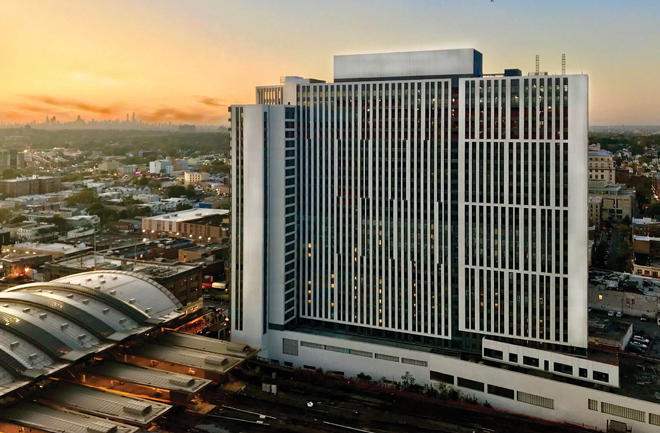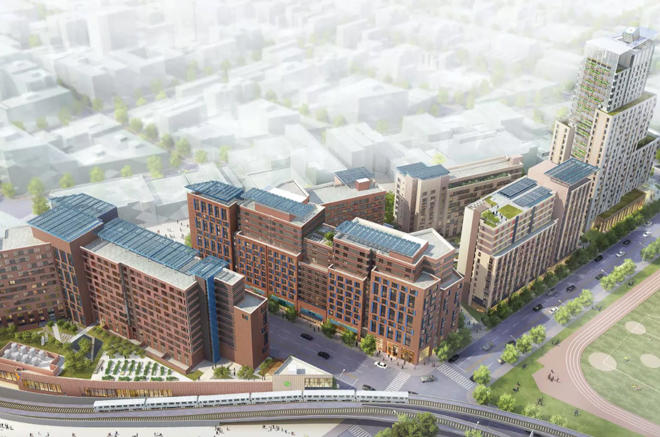As a managing partner of BRP Companies, Meredith Marshall is one of the largest builders of affordable and workforce housing in New York. The company placed third on The Real Deal’s list of most active developers of 2020, with 3 million square feet in the pipeline across 10 affordable, market-rate and mixed-income projects.
It’s a complicated business. To assemble funding for a single affordable project, Marshall and partner Geoff Flournoy often turn to a dozen sources of capital, from city and state subsidies to loans and private investors. That complexity, he said, means that the business — particularly what gets built and who benefits — is often misunderstood by lawmakers.
“We should have naturally occurring affordable housing,” Marshall said in a recent conversation with TRD. “We should get people who know real estate to get around the table with some of the not-for-profits, with the City Council, and say, ‘Look, let’s have the same set of facts here.’”
Read on for Marshall’s take on the mechanics and politics of housing development.
This interview has been condensed and edited for clarity.
There’s been this narrative of New Yorkers fleeing the city in droves, but I’m assuming that doesn’t apply to the communities that you’re building in. Well, the “Tale of Two Cities” — the more wealth you have, the easier it is to leave and decamp to the Hamptons or Florida. We have friends who did that, and more power to them. But we haven’t had tremendous loss of occupancy or tenancy.
Something that keeps a lot of people out of affordable and workforce housing development is that it is extremely complex to put together the financing. How does it work for BRP Companies? At Jamaica Crossing, we have 11 or 12 different sources of capital. We have low-income tax credits, brownfields tax credits, state tax credits, an Empire State Development Corporation loan, the state demolition loan. We have HPD, Housing Development Corporation loans. First, second, third loans.
It’s really financial engineering. Building the building is actually easy. This is a $400 million project that has about $100 million in equity. The capital stack had to involve another $300 million of miscellaneous subsidies, taxable bonds, tax-exempt bonds and so on. If I showed you the capital structure chart, not even an electrical engineer would get it.

Is the city able to honor its capital commitments, given the fiscal strain it’s under? Those buildings are being built; the capital has been allocated. The second phase of our La Central project in the Bronx has been delayed a little bit because the city has to figure out how to allocate across more projects with less funding, but we’ll close that deal probably at the end of this year.
The other projects are moving forward because we were clever enough to figure out different sources of capital. We have a lot of investors who want to participate in workforce housing development.
When you build workforce housing and you have to generate a certain rate of return, a lot of investors shy away from it. They think everything is Section 8 housing and everything has to be a tax credit, but that’s not the case. In Jamaica and Central Harlem and even Central Brooklyn, you can get a decent rate of return.
A lot of these investors are institutions that represent pension funds. So the same people who need workforce housing are the ultimate investors. But there’s a disconnect in the narrative here, because folks haven’t really drilled down on “Who needs the housing, who are we building for and who’s ultimately investing in the housing?”
City Council member Brad Lander recently introduced a bill proposing that nonprofits get first dibs on city-owned land for affordable housing. What’s your reaction to that? Maybe that works politically, but I don’t see how that works. And I think it’s illegal, quite frankly, because you have to tie up your process [for] 120 days [the head start nonprofits would get to submit bids]. We work with not-for-profits; they don’t want these buildings. It’s just a waste. It’s not well thought out.
Your breakthrough in the real estate industry was actually renting to fraternities. I’m in an African American fraternity, Kappa Alpha Psi. In Boston, you go to MIT and all these schools and you see those wonderful frat homes. African American frats didn’t have frat houses, but we had connections. We had roommates from different schools — Harvard, MIT, Northeastern, Boston College — who all would team up and rent a place. So we said, “Why don’t we get a frat house?” And some of our fraternity brothers said, “No, we don’t want to get into the real estate business.”

The Crossing, Jamaica
As soon as we graduated — I was 22, I think Geoff [Flournoy] was the same age — we bought a row house from our Harvard professor in Roxbury, and then we converted it to three condos. And then in the condos, we had separate bedrooms. We all roomed in that building. We had great parties. It was a time when the Celtics were past the Larry Bird era, but they had Reggie Lewis, who went to Northeastern. So Boston was a great place.
People would call it Club Babalu, and there’s some famous people who went to Harvard Law School and Business School who would come there. I can’t mention them.
It was the spot. It was the spot back in the late ’80s, early ’90s.
And that was your first taste of the business? Yes. It was primarily to have someplace to bring the young fraternity guys that are pledging, but also the girlfriends. We wanted to own our own place. We changed the bathroom and we did the tile and we learned the business. And then Geoff went to the University of Chicago Business School, [and] I went to Columbia [Business School]. We worked on Wall Street but we always thought, “Look, we want to get back into this game.” So while we were working on Wall Street, we bought the brownstone we lived in. And then we started buying up everything in Fort Greene, Clinton Hill.
After a while we probably had a $20 million portfolio. And then there was a friend of the family that seeded us with about $10 million in 2005. And it’s not a lot of money now. That can’t buy a condo now, but back then we could secure some sites. And then we were introduced to Goldman [Urban Investment Group] in 2007, and that really allowed us to really scale [the business].
As one of the biggest developers in this space, you need to think about how the industry is portrayed. How do you and your colleagues manage that? I was born in Crown Heights and I grew up in East Flatbush. And my dad was one of those essential workers. He drove a bus for a living. So I’m a real New Yorker, right? I went to Brooklyn Tech, public schools, yada, yada, yada. And I have friends in all different communities, all different races.
I think that we get the story wrong in New York. We need to build more workforce housing for the typical New York City worker. We could restrict the incomes, but I think we need naturally occurring [affordable housing].

La Central, the Bronx
We can’t all do it with HPD and city subsidies because we just don’t have enough money. We should have naturally occurring affordable housing [and] increase the supply. We should get people who know real estate to get around the table with some of the not-for-profits, with the Brad Landers of the world, [the] City Council, and say, “Look, let’s have the same set of facts here.” How many units of workforce housing do we need in the city? Fifty thousand, let’s say, and we’re only building 20? That’s the shortfall. Let’s come up with a creative plan for the shortfall.
Herman Cain had his 9-9-9 tax plan. I’m not saying it made any sense, but it was easy to understand. Is there a future in which all your acronyms — your HDCs and ESDs — could be simplified into something that is easy for people to understand and easy for people to engage with? What I think is more likely and what could happen — what should happen for the city — is that we take people who don’t understand this process out of decision-making. This is very complicated. I went to Brooklyn Tech, so I learned how to read blueprints a long time ago. I did engineering, I did finance. I went to Columbia Business School. I put all those things together and I think I’m a pretty successful developer. And even I don’t know everything. It’s hard to put that upon a community board or a Council person, who is term-limited. It’s not because they’re not intelligent. But they don’t know what they’re talking about. So they come up with these schemes.
So we need to rethink this thing. I think that we need to have confidence in the leadership. And we have a city or state function that has competent people. [Government employees] could get paid market-rate salaries and they make decisions that are transparent.
There’s no way to avoid the complexity. Affordable builders are limited. We’re the financial capital of the world. We have the best architectural firms in the world, the engineering capability, the construction capability. We have the know-how. We have 100,000 kids in the New York public school system that are homeless or housing-insecure. Why? What is that? Do we have enough City Council people? Do we have enough community boards? What is it?
We need more housing. The same people who say we don’t have enough housing are limiting housing.
Watch the full interview with BRP Companies’ Meredith Marshall here.
